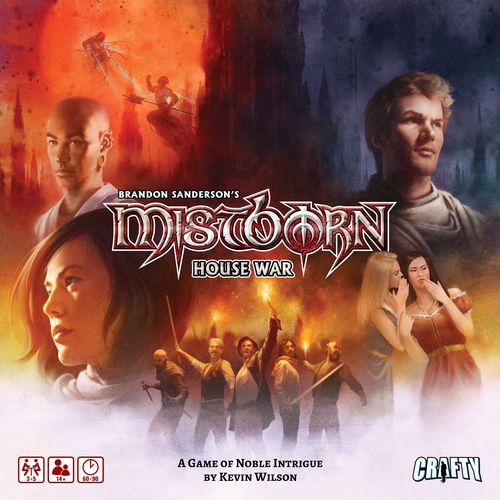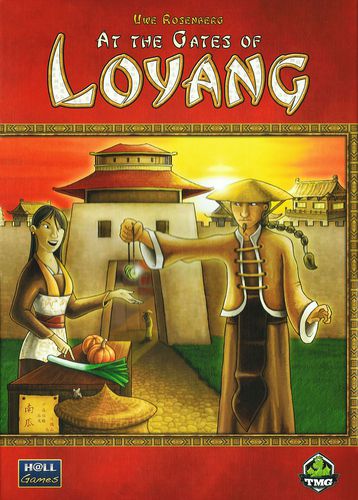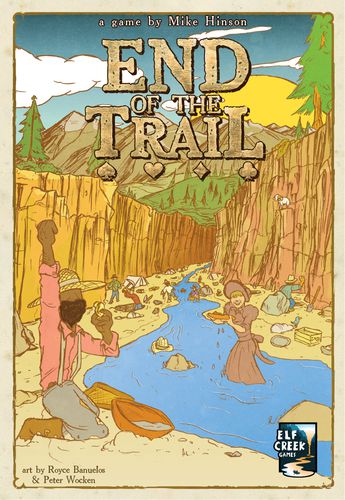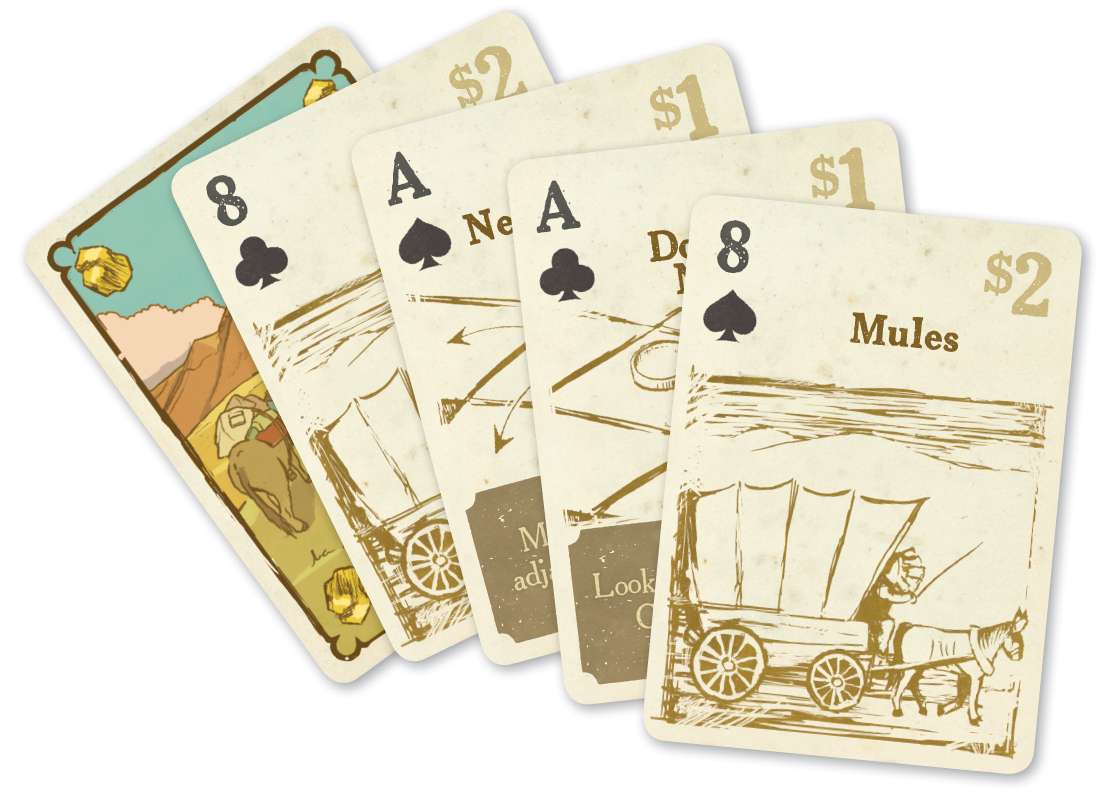As part of our June Spotlight on End of the Trail, we strive to inform readers of little extra tidbits surrounding the game. Games are made by people, and one of those tidbits we enjoy is learning a little bit more about the people behind them. Some designers shy away from the public stage, while others enjoy being front and center.
When it comes to End of the Trail designer Mike Hinson, the roller coaster ride of seeing his inaugural game come to life and reach gaming tables everywhere has been monumentally rewarding – tempered perhaps with just a tiny tinge of anxiety. Still, in the same way every first-time designer loves to share the details about their first foray into publication, Mike was nothing if not willing to share some of that experience with us.
And lo, so it was that we sought Mike out to better understand the background of what went into the creation of End of the Trail. This was a game that mixes casual gameplay with moderately substantive decisions, as well trying to find the right balance between push your luck elements with tactical card use. On paper that seemed like a difficult challenge. And…well, okay, yeah, it was. However, there was surprisingly little deviation between Mike’s original top-level vision for the game and the final product: a lightweight and approachable game about prospecting for gold in the Old West that was both thematic and mechanically resonant.
June has been a busy month for Mike and the Elf Creek team, between the game’s Kickstarter fulfillment and its official launch at the Origins game convention. Thankfully, he was also more than happy to squeeze some time in to talk with us about this tile-flipping, poker-infused card game all about striking it rich.
We couldn’t promise that last part to him especially, but we were able to promise this interview instead (being clearly the next best option), to which he promptly accepted. What follows is part of that conversation. Enjoy!
Round One Questions
CR: What was your Gateway Game?
My Gateway Games were Catan and Betrayal [at House on the Hill]. I didn’t really get into the hobby until I played Dominion at a friend’s house. I’ve been playing games ever since.

CR: What was the last game you really enjoyed playing (besides End of the Trail)?
This is a tough question because I enjoy almost every game that I played…I would have to say that the last game I enjoyed playing that I’m not helping design or develop would be Mistborn: House War. I just like the way Kevin Wilson brought the book to life and the negotiation and semi-coop nature of the game.
CR: How big is your game collection?
Counting expansions, around 250 or so.

CR: What is your favorite type of game to play?
It depends on the crowd. I have a group that loves co-ops, a group that loves heavy Euros, a group that likes Legacy games, etc. If I had to pick one, I’d go with Euro games that make you think. My favorite game is At the Gates of Loyang by Uwe Rosenberg, which isn’t as crunchy as Agricola or Le Havre, but there are a ton of awesome decisions that have to be made in that game.
CR: How do you feel about Monopoly?
I love it and would love playing it again if anyone ever wants to! When you grow up on a game, it’s fun to play it again with people. I feel nostalgic every time I see anything about Monopoly!
On End of the Trail
CR: End of the Trail examines the California Gold Rush in a casual but substantive way. Did you have an affinity for the stories of the West prior to the design of the game, or was the theme something that developed later?
The theme for End of the Trail was something that was developed at a very early stage. I grew up watching westerns with my grandma and my dad so I always loved the old west when I was a kid. Tying the game into the Gold Rush was a no-brainer for me, and the gold rush is a huge part of American History, which I studied in college.
CR: The game utilizes multi-use cards that serve different purposes depending on which way you spend them. Were there specific other games that inspired that mechanism?
There are a few games that I drew inspiration from, the main one be La Granja where the cards serve as a crop, a contract, a building, or an animal. I think that multi-use cards may be my favorite mechanism. The first game that I can think of that used multi-use cards in an amazing way is Pandemic. In Pandemic, you can use the cards to travel to the city, to build a research center, to cure a disease, and so on. I think Matt Leacock is a genius for what he created with Pandemic, and I’d say, for me, that is my standard game for co-op games and multi-use cards.
CR: End of the Trail also includes partial use of poker hands, which can be intimidating to many players – especially casual ones. What was it like finding the right balance for its inclusion?
It was difficult because I wanted to try to be inclusive towards everyone with the set collection for the cards. We tried a rummy variant for younger players (runs / sets) but I always came back to poker because it was something that was very thematic for the Old West. You see in the movies all of the card games being played in the saloons, it was always some variant of poker. I felt, at the end, that poker was the best way to tie the theme to the game.
 CR: What’s the best hand you’ve seen someone manage during your playthroughs so far? We’re assuming anything above a full house would be pretty tricky…
CR: What’s the best hand you’ve seen someone manage during your playthroughs so far? We’re assuming anything above a full house would be pretty tricky…
I have seen two royal flush hands: one by Brent [the developer of the game] and me. Brent won – I somehow lost by 1 gold. You do see a lot of flushes and straights, but even a full house can be tricky because if you miss the third card then you’re stuck with two pair.
CR: Similarly, the game seems to position itself as a press your luck game with some purpose behind its gambles. At what point during design did you realize that’s the direction you wanted to take with it?
From the beginning we had the press your luck mechanism in the game. I wanted to make sure that you could bust, but that you can also bluff at it since it is a memory game and the information you have isn’t perfect. I wanted there to be player interaction during multiple facets of the game, and for the bluffing while prospecting to work, we needed press your luck.
CR: End of the Trail was your first Kickstarter project. What was going through your mind when you hit that launch button?
I was actually at work on launch day. I was hitting the refresh button on the screen every 10 minutes after Brent launched the campaign. I would say that I was just nervous because I wanted the game to fund day 1 and, because of our amazing following, that happened. We have had a lot of support for End of the Trail and I am so happy for that support.
CR: The numerous successful upgrades that appeared as a result of the campaign allowed for the making of a better game, but it also seemed to hint at other material as well. Were there any aspects of the game that didn’t make it into the final version for one reason or another?
The base game included the ideas that we had for End of the Trail, including the solo mode. Just before the campaign, I started to brainstorm an expansion idea that I am starting to playtest so there is more content, but it wasn’t going to be part of the initial release.
CR: Finally, how do you think you’d have fared as a prospector in those days? Be honest.
I would be horrible. I’d be the guy who goes into town shouting about gold and it ending up being Fools Gold!
End of the Trail is a concise and thematic card & tile game about trying to strike it rich during the California Gold Rush. Over a short few rounds, players have to decide the best way to spend their multi-use cards, including the creation of poker hands for bonus points. Sprinkled in there you also have to stake a claim and try for valuable gold deposits hidden under certain tiles and must decide to keep your first location or chance another for a bigger payout.

Truth be told, not many 49ers got rich off of their quest for that precious, precious metal. And playing this game probably isn’t likely to do so either. We certainly can’t help with that ourselves, mostly due to us forgetting the combination to the vault in the…well, never mind that. What we can do though is make someone a little richer by giving a free copy of the game away. So let’s do that instead!
Photo Credits: End of the Trail cover and photos by Elf Creek Games.



